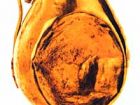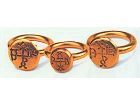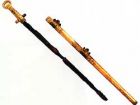THE PERESHCHEPINA TREASURE - KHAN KUBRAT'S GRAVE
THE PERESHCHEPINA TREASURE
KHAN KUBRAT'S GRAVE
KHAN KUBRAT'S GRAVE
On a summer day 90 years ago (in 1912) shepherd boys from the village of Maloe Pereshchepino, Poltav region in the Ukraine played by the small river of Vorskla. Unexpectedly one of them was stuck in the sand up to his waist. When they took him out they understood that he had fallen into a large gold vessel. The peasants collected other valuable objects with an overall weight of 20 kg of gold and 50 kg of silver. These were perfectly made eating vessels, many pieces of jewelry and richly ornamented weapons. Policemen and archeologists arrived from Kiev, collected the finds and took them away. Later all finds were taken to the largest Russian museum The Hermitage in the then capital of the Russian state.
This discovery raised many questions. The first one was the dating of the treasure. This was easy to answer. The objects had forms characteristic of the 7th c. AD since each historical period had its specific fashion. The dating was aided by the coins of Byzantine emperors who ruled Byzantium in the middle of this century.
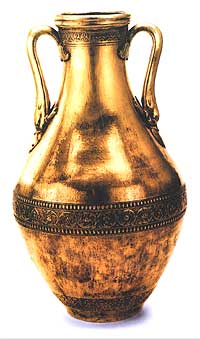
But then a new question arose - to what people do these treasures belong? There were objects of Byzantine, Persian and Barbarian origin. Scholar decided that the treasure has been collected for a long period through presents from foreign rulers, during wars or by buying valuable objects from other people. It was obvious that the treasure has not been buries accidentally and that it belonged to the grave of an important person, which contained his most valuable and favorable objects. Such a treasure could belong only to the Bulgarians who at that time inhabited the steppe of the Ukraine.
Therefore this must be some of their rulers and not a representative of the Avars, the Hazars and the Slavs, as was initially thought.
Then came the next question - who as this mighty ruler? The resolution of this question was taken up by one of the greatest German archeologists Prof. Joachim Werve been only the khan of Great Bulgaria. This state at the time covered a large territory along the rivers Dnepr, Don and Dnestar and must be recognized as the first state unification of the Bulgarians. As his uncle Organa took a child Kubrat to the capital of Byzantium, Constantinople, where he lived for a couple of years and came to know Byzantine culture and way of life. There he became friends with the future emperor Iraclius and this lasted till his death.
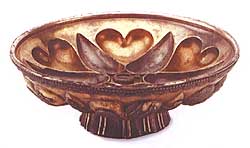 On returning to his homeland, Kubrat spearheaded the battle of his people against the Avars. After driving them away, he created about the year 630 the state of Great Bulgaria, which he ruled almost 30 years. After his death his sons buried him with great ceremony and soon separated as the state fell under the rule of the Hazars. His third son headed for the Danube where he founded a state, which is a continuation of the traditions of the old Bulgaria.
On returning to his homeland, Kubrat spearheaded the battle of his people against the Avars. After driving them away, he created about the year 630 the state of Great Bulgaria, which he ruled almost 30 years. After his death his sons buried him with great ceremony and soon separated as the state fell under the rule of the Hazars. His third son headed for the Danube where he founded a state, which is a continuation of the traditions of the old Bulgaria.During the burial by the body of the diseases were laid two valuable gold sets of 12 pieces each. With them he used to treat his guests and nobles. These sets consisted of cups of massive gold and wine decanters. In addition in the grave were laid the most expensive clothes of the ruler and various jewels and ornaments - bracelets, necklaces, buckles and belt applications, and armament. Among them most impressive is the sword made of gold and precious stones. It is believed that the khan received this sword and other valuable objects as presents from his friend - the Byzantine Emperor. Ancient sources inform that the Emperor even pronounced Kubrat to be a honorable patrician (the highest title in Byzantium after the Emperor). A direct confirmation of it is his massive patrician buckle of gold weighing more than 400 gm. The Khan wore it on very special occasions together with the patrician sword.
We often ask ourselves the questions — did archeologists give the correct explanation of the treasure? Fortunately the finds contain the most solid proofs of that: Three gold rings, on which are engraved monograms with the name of Kubrat. In one of them he is even called "a honorable Byzantine patrician."
Unfortunately the great state of Kubrat disintegrated after his death under the strong pressure of the Hazars. His five sons separated and took in different directions. Only Asparuh succeeded in fulfilling the goal of his father on the Balkan Peninsula.
The Pereshchepina Treasure is not an ordinary treasure. Its historic importance is invaluable as information about the first years of the Bulgarian state.





